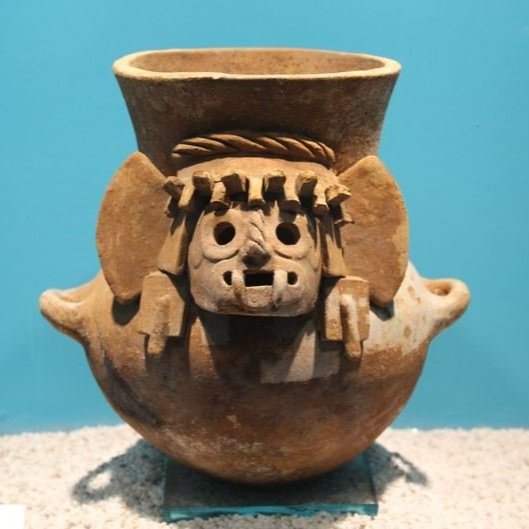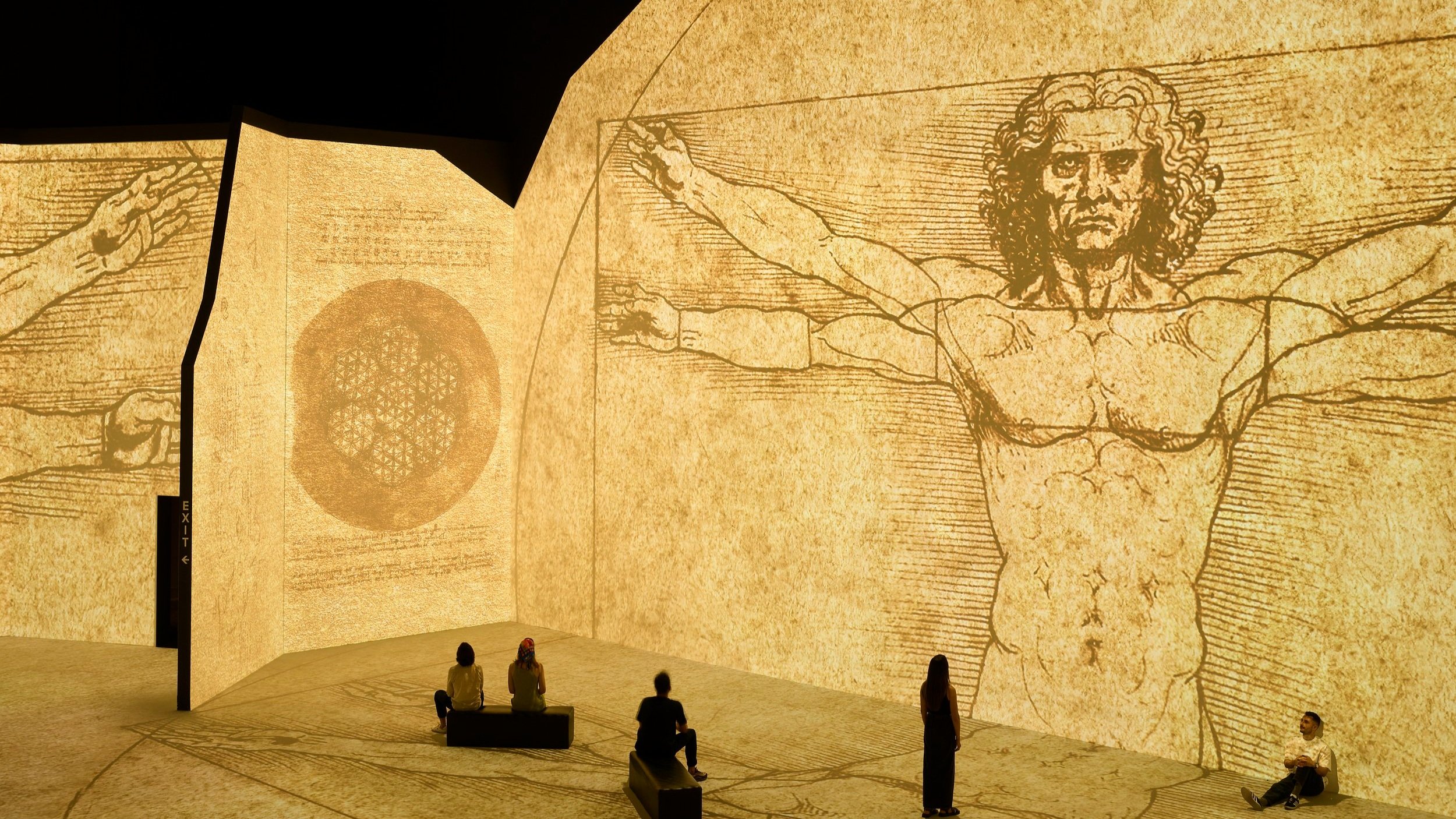Why Are Jackson Pollock Paintings So Expensive?
Jackson Pollock at the Art of This Century gallery, 1947. Archives of American Art, Smithsonian Institution
Why Are Jackson Pollock Paintings So Expensive? Among the many artists who have shaped the history of art, Jackson Pollock stands as an iconic figure, his artworks often fetching astronomical prices in the art market. But what lies behind the staggering value of Jackson Pollock paintings?
In this article, I explore the factors that contribute to their exceptional worth, from artistic mastery and historical significance to cultural allure and market trends.
1. Jackson Pollock’s Influence on Contemporary Art
Jackson Pollock’s impact on the art world is not confined to his era; it reverberates through time, shaping the essence of contemporary art.
Pioneering Techniques as a Blueprint - Pollock’s innovative techniques, characterised by his iconic “drip paintings”, were revolutionary in their time. The way he approached the canvas, employing gestures that seemed to capture raw emotion and energy, resonated deeply with those who sought to break free from traditional artistic constraints. Today, these techniques have become a blueprint for artists who seek to explore the boundaries of their creativity. His legacy lives on as a source of inspiration, setting the standard for contemporary artists to express their innermost thoughts and feelings on the canvas.
Desirability of Original Works - The enduring influence that Pollock holds over contemporary art significantly enhances the desirability of his original works. Collectors and art enthusiasts recognise that owning a piece of Pollock’s art is akin to possessing a tangible link to the evolution of artistic expression. The recognition of his influence amplifies the allure of his works, making them coveted treasures that bridge the gap between the past and the present.
2. Jackson Pollock’s Critical Acclaim
Critical Acclaim: Recognised by Experts - Recognition from the art world has elevated Jackson Pollock’s paintings to a level of critical acclaim that extends far beyond their physical form. Art historians, critics, and curators have shown their appreciation for the profound impact these paintings have had on the world of art. Their continued recognition is a testament to the enduring legacy that Pollock has left on the artistic landscape.
Shaping Art History - Experts acknowledge that his canvases aren’t just compositions of paint; they are markers of pivotal moments that have reshaped what art has the potential to be. This acknowledgment goes beyond the surface - experts understand that these paintings have contributed to the ever-evolving story of artistic expression.
An Integral Part of Art Movements - Pollock’s paintings aren’t isolated masterpieces; they are an integral part of larger artistic movements. His role as a central figure in the Abstract Expressionist movement underscores his significance in shaping the course of modern art. Critics and curators recognise that his work isn’t just an exploration of technique; it’s a journey through human emotion and experience.
Validation of Artistic Vision - The recognition from experts is validation of Pollock’s artistic vision. Art historians delve into the intricacies of his techniques, tracing the lineage of his influences and the impact he’s had on subsequent generations of artists. Curators carefully select his works to be showcased in galleries and museums, recognising that each painting is a chapter in the evolution of art.
3. Limited Supply of Jackson Pollock Artworks
Limited Supply: Brief Active Period and Rarity - Jackson Pollock’s artistic journey was marked by a relatively brief period of intense creativity, resulting in a limited supply of his original paintings. This scarcity, combined with the unique circumstances surrounding his works, contributes to the rarity that drives the fervent demand for his pieces. The chase to own a part of Pollock’s artistic legacy has led to soaring prices in the art market, making his paintings highly coveted treasures.
His most prolific and innovative period, often referred to as his “drip period”, occurred from the late 1940s to the early 1950s. During this phase, Pollock produced a significant portion of his iconic paintings that are celebrated today.
Rarity in Prestigious Collections - Many of Pollock’s original works are held within esteemed private collections, renowned museums, and galleries. These prestigious institutions recognize the historical and artistic significance of his creations, and as a result, they carefully curate and protect his pieces. The limited number of his works available for public display further contributes to their scarcity, creating an air of exclusivity that captivates collectors and enthusiasts alike.
High Prices and Rarity - The intersection of limited supply and high demand sets the stage for a dynamic that drives up prices. As Pollock’s paintings become scarcer due to their dispersion across collections, the desire to possess an authentic piece of his legacy intensifies. Collectors recognize the opportunity to own not only a unique work of art but also a tangible piece of history that represents a turning point in the evolution of art.
4. Cultural Status
An Artist’s Quest for Individuality - Pollock’s journey as an artist mirrored a larger societal quest for individuality and self-expression. In his art, people found a reflection of their own yearning to break free from constraints and embrace their own identity. His paintings became a visual embodiment of the search for authenticity, resonating with those who identified with the spirit of nonconformity and a desire to carve their own paths.
The Art of Cultural Evolution - As the Abstract Expressionist movement took shape, Pollock’s art played a pivotal role in shaping the cultural evolution of his time. His canvases were more than just artistic expressions - they were societal mirrors reflecting the shifting paradigms of a post-war world. Jackson Pollock contributed to a narrative of change and transformation.
Seeking a Tangible Connection - Collectors and enthusiasts seek more than just a canvas adorned with paint; they seek a tangible connection to the cultural icon that Pollock represents. Owning a Pollock painting isn’t only about possessing art - it’s about owning a piece of history, rebellion that resonates with the spirit of human ingenuity and creativity.
5. Celebrities and Publicity
Celebrities and Publicity: Endorsements and Influence - In the realm of art, the power of celebrity endorsement and influence cannot be underestimated. Jackson Pollock’s art has found itself in the limelight, not just through the lens of critics and connoisseurs, but also through the voices of influential figures from various walks of life. From esteemed art enthusiasts to Hollywood icons, these endorsements have added a new dimension to Pollock’s legacy - one that transcends the canvas and resonates with a wider audience.
A Pop Culture Phenomenon - Pollock’s art, once confined to the art world’s inner circles, has entered the realm of pop culture. The recognition from influential figures introduces his work to new audiences who might not have previously engaged with the art world. The merging of art and pop culture creates a convergence of interests, leading to a surge in public awareness and curiosity.
6. Investment Potential
Investment Potential: Aesthetic and Financial Value - Jackson Pollock’s artworks are not only visual treasures but also hold the potential for significant financial returns. The convergence of scarcity, historical significance, and lasting influence makes Pollock paintings a compelling proposition for collectors and investors alike.
The Auction Arena: Where Records Are Shattered - When the gavel falls at auctions, it often marks the culmination of intense anticipation, strategic bidding, and the desire to secure a piece of artistic history.
In the realm of Jackson Pollock’s paintings, auctions have become a stage for unparalleled drama. These events not only showcase the intensity of demand for his works but also redefine the boundaries of artistic value.
In recent years, Jackson Pollock’s paintings have fetched staggering prices. These record-breaking sales, often surpassing the hundred-million-dollar mark, have elevated Pollock into a league of his own within the art market.
Some of the most iconic sales of Jackson Pollock’s artworks include:
In November 2006, a drip painting by Pollock titled ‘No. 5, 1948’ was sold for about $140 million, which was the highest sum ever known to have been paid for a painting at the time.
At Sotheby’s Post-War and Contemporary Art sale in 2012, Pollock’s “Number 4 (1951)” sold for over $40 million.
In May 2022, a modestly sized Pollock painting titled “Number 31” was sold at Christie’s 20th Century Evening Sale auction for more than $54 million.
A Virtuous Cycle of Demand - The auction records set by Jackson Pollock’s paintings create a virtuous cycle of demand. As headlines scream about the latest record-breaking sale, art enthusiasts, collectors, and investors take note. The allure of owning a piece of history becomes more irresistible, prompting more individuals to vie for the opportunity to possess a Pollock original. This heightened competition translates to increased bids at subsequent auctions, continually pushing the boundaries of what a Jackson Pollock painting can command.
I have written other articles about where to view Frida Kahlo and Gustav Klimt artworks, that you may also find interesting.
I hope you have enjoyed this article about Jackson Pollock. I would love to hear your thoughts, please feel free to email me at [email protected].








